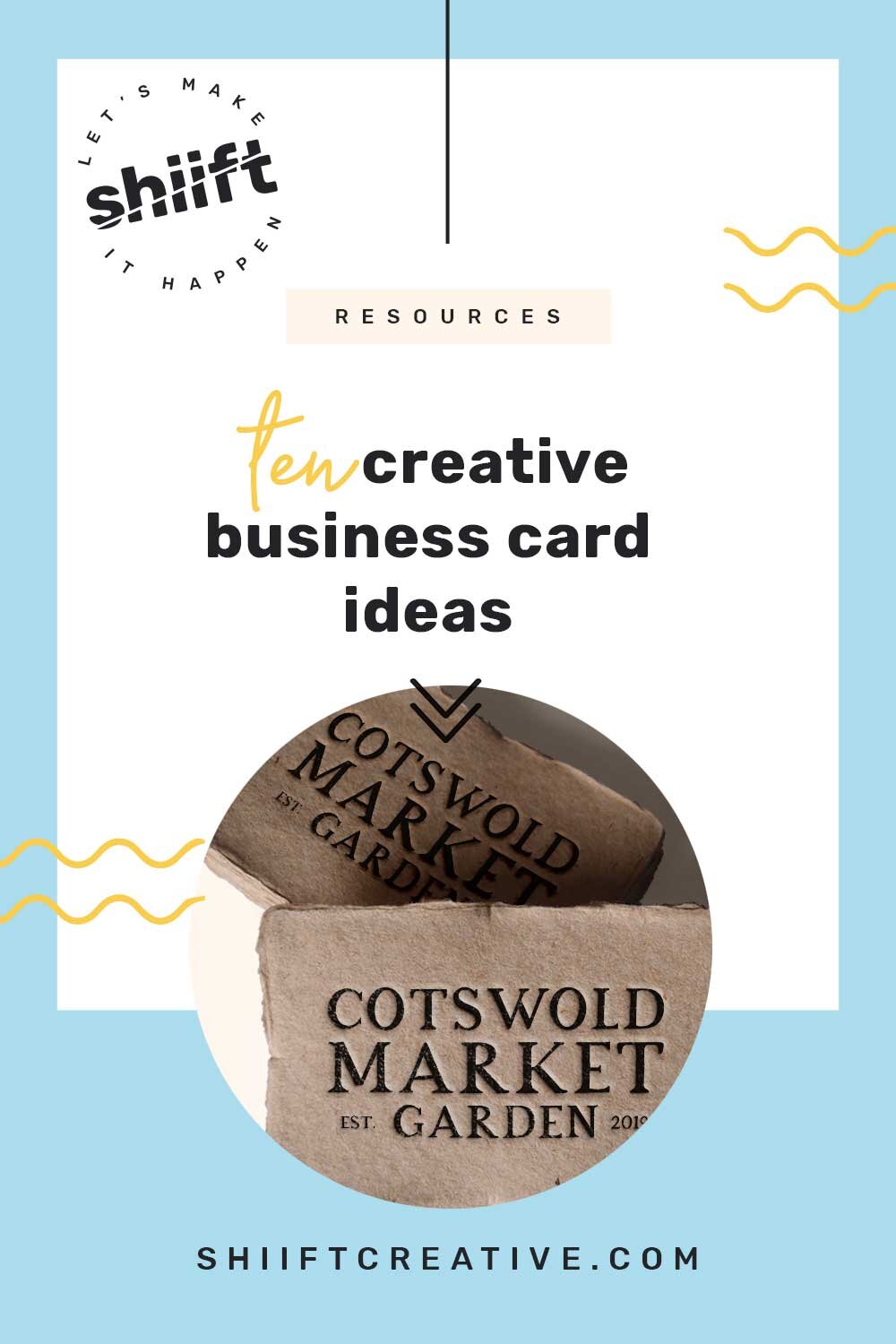10 Creative business card ideas
Business cards are often the first point of printed communication you will have with a prospect client or customer. Whether people are going to contact you later that day or at some point in the future your business card needs to stand out and be memorable whilst communicating all your important details.
01 / Spot UV
Spot UV coating or "varnish" is applied to chosen spots (areas), of a printed card. This has the affect of highlighting and drawing attention to that part of the design, but it also provides the additional visual stimulus of having varied textures on a single printed surface.
Things to remember: Spot UV can look great on anything but it tends to stand out more where the colour is solid. If you are wanting to get a higher contrast finish, use spot uv on a matt card stock.
02 / White Ink
White ink creates a contrast particularly when used on black. It’s cost effective and the results are striking.
03/ Letterpress
Letterpress printing is a process of 'relief' printing text and image using a 'type-high bed' press and movable type, where a reversed and raised surface is inked and then pressed into paper to obtain a positive right-reading image.
Things to remember: The more colours you use the more times your card will have to run through the press. To keep costs down, try to limit yourself to just a few colours.
04/ Painted Edges
This spot uv card has luminous painted edges. This os a great inexpensive way of livening up your business cards. You can even do it yourself: Clamp your business cards together in a very neat stack, get a good quality spray paint and spray away, let it dry and unclamp your cards, run a quality check as it can sometimes bleed through.
05/ Alternative Shapes
Why limit yourself to a standard shape?
Things to remember: As long as the shape can be cut out of the standard business card size it will be fine. Any bigger or too awkward will not slip into a wallet or jacket pocket.
06/ Hot foiling
Hot foiling is a great effect to give your business cards that prestigious feel. It uses the impressing of pigment or metallic foil to paper using heated dies. ... Business cards with foil often feature foil text or graphics, such as logos.
Hotfoiling is not only limited to gold and silver but comes in a range of other colours too.
07/ Die Cut/Laser Cut
Custom die cut business cards are produced using a sharp steel cutting blade called a "die" that's formed into a shape similar to a cookie cutter. Die cutting can be used either to punch out a decorative shape or pattern within a piece or to create an interesting outer shape for your business card design.
A cheaper alternative to die cutting is later cutting. This works best on darker card stock as the laser can sometimes burn the edges leaving a slightly brown mark on white.
08/ Alternative Materials
Why limit your business cards to card?! The example is a clever use of using an alternate material that reflects what their business does.
Things to remember: When using alternate materials you are unlikely to be able to run them through a traditional printer. You may have to look into getting them screen printed like this example or if on a harder material like a thin piece of metal or wood, you would have to look at laser engraving.
09/ Blind Embossed
This sleek card has been produced using hot foiling (see 5) and blind embossing. Blind Embossing creates a raised area of print through the use of a die. Both blind embossing and blind debossing (relief down into the card) produce beautiful, textured finishes to business cards.
Things to remember: When using this technique the revers of the emboss will show on the back of the card. If you don't like this or want the back of the card to have more information you can duplex the card so you have a smooth surface on the revers.
10/ Duplexed
A duplex is the pasting together of two sheets of paper, making one thicker sheet in the end. You can duplex together two sheets to make a thicker card but when using three sheets you can insert a contrasting colour so that when cut it shows through.






